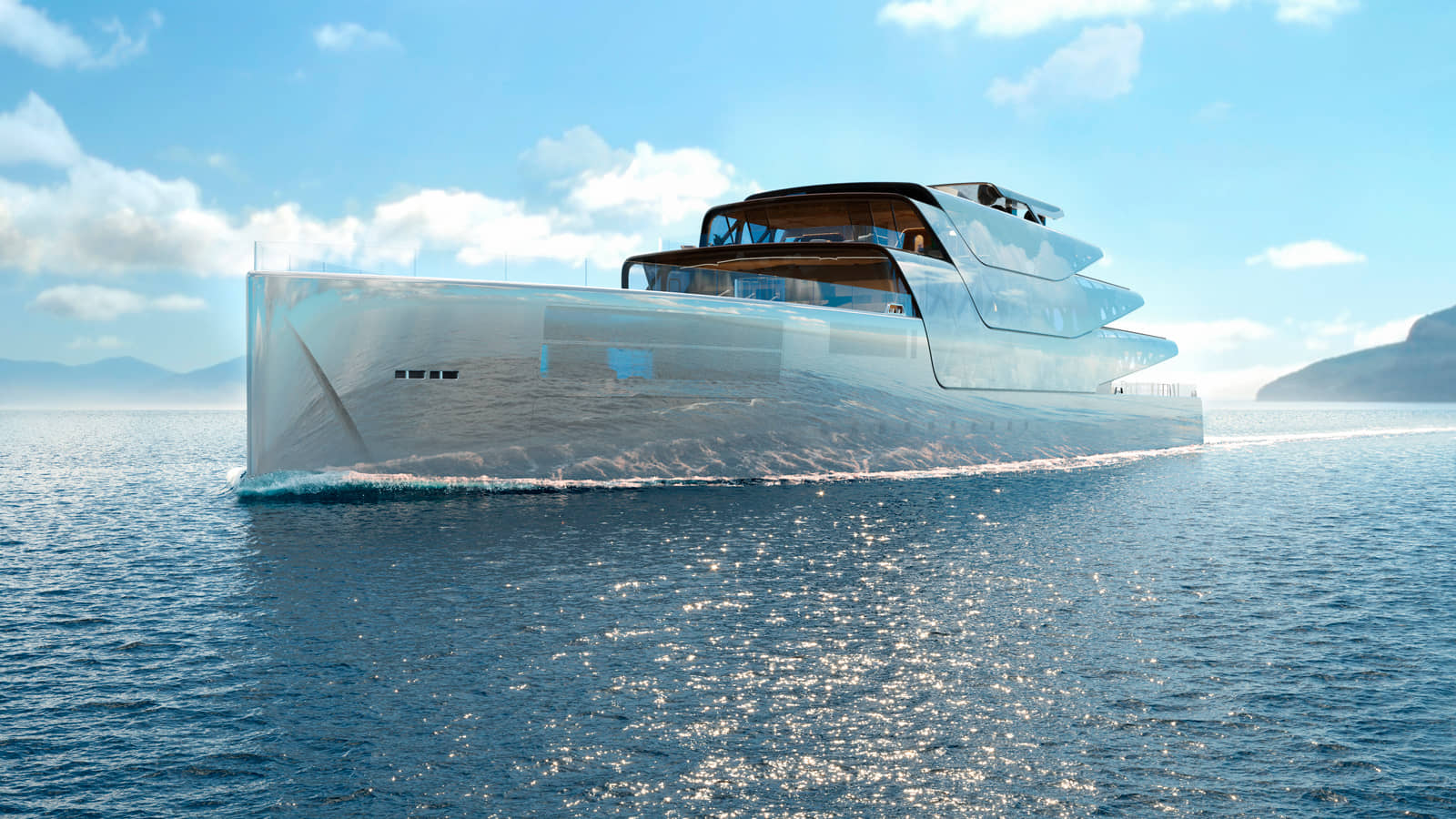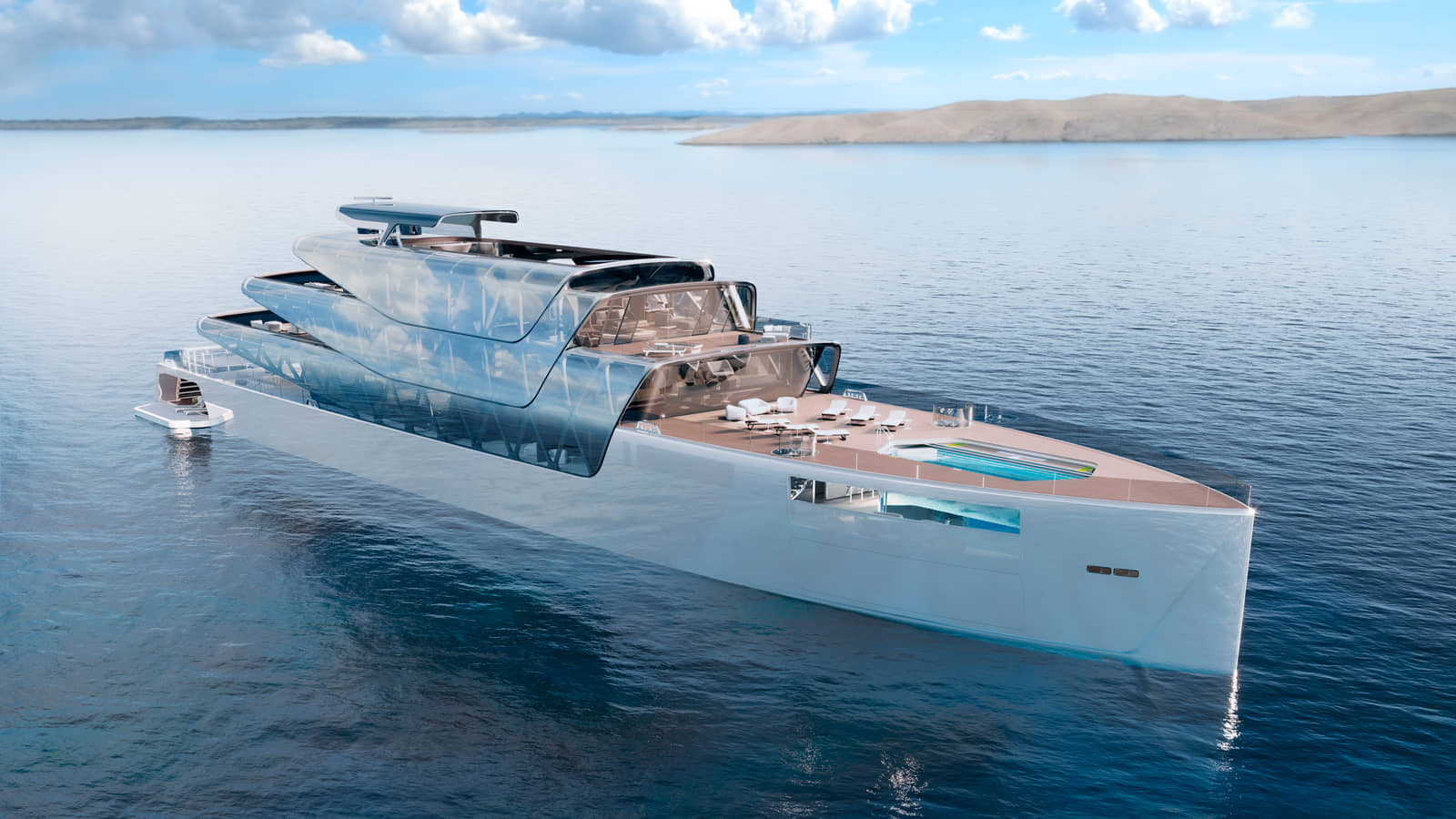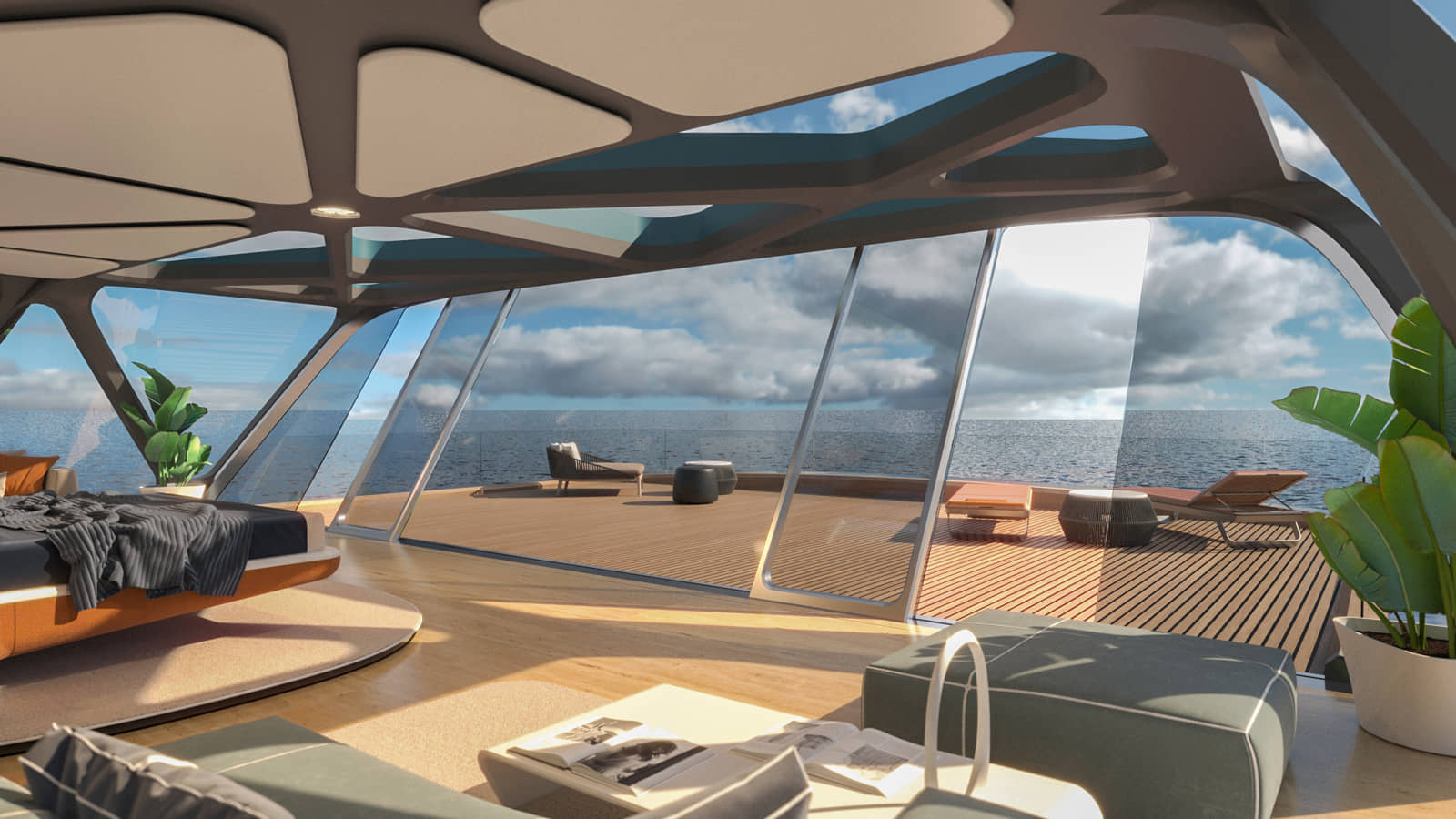This luxury superyacht, which would be made entirely of mirrored glass to reflect the sea and sky, has been unveiled as a concept by designer Jozeph Foakis. He said the proposed 290ft (88m) vessel, dubbed Pegasus, would be the world’s first 3D-printed vessel and ‘invisible both in design and in her environmental impact.’

The boat, with inbuilt solar panels, would be able to reflect the sky, clouds, and the surrounding environment. Its reflective Solar Wings, hidden in the glass of the superstructure, would also be able to provide solar-electric power to run, working alongside a hydrogen hybrid source, Foakis said.

The energy from the solar power is then used to power electrolyzers, extracting hydrogen from seawater. Fuel cells then convert hydrogen to electricity stored in Li-ion batteries for powering azimuth pods, a type of engine, and all operating and hotel systems.
The price for the superyacht has not been revealed but undoubtedly will be aimed at the extremely wealthy. Pegasus is currently being prepared to show interested shipyards and could be in production by 2030.

Foakis, who is based in Milan and New York, said he wanted to create a yacht with zero emissions, a principle reflected throughout the boat’s themes. There is a multi-level ‘Tree of Life’ hydroponic garden that provides fresh food and air purification on board.
Foakis said, “I was inspired to create a yacht as close to the sea and nature as possible, made of clouds floating above the waterline. I wanted to honor nature by blending into it, becoming virtually invisible. Now is the time for courageous leaps toward our collective sustainable future. Pegasus is a bold but achievable vision for the near future of the superyacht industry, where man and machine live in harmony with nature rather than competing or compromising it.”

The superyacht would be made using a robotic 3D printing machine to create the mesh framework for the whole boat. The designer said this would result in an extremely strong yet lightweight structure, which could be produced using less energy, material, waste, space, and time compared to conventional construction.
The yacht’s interior features four levels, connected by a sculptural spiral staircase, with spacious guest lounges. The boat has a minimalist design, reflecting living in nature, both inside, with living greenery, and outside, with uninterrupted views of the seascapes in all directions.

On the top floor, the concept features a master suite with a large private terrace, which only the boat’s owner would be able to access. The pool club, located at the front of the boat, includes an aquarium-style lap pool and expansive horizontal windows that transform into open balconies on both the port and starboard sides. When closed, the pool cover functions as the helipad. At the back of the ship, there would be an open beach club, as Fokais said.
This beach club would have an oversized jacuzzi with fold-down balconies that transform into an enclosed solarium with sliding glass panels across the ceiling and down the transom bulkhead. The idea for this futuristic yacht was conceived on a beach in Koufonissi island, Greece.

This is one of several concept designs for yachts that have been introduced in the last few months. In January, a luxury 242-ft yacht was designed by the Rome-based Lazzarini Design Studio, called the Plectrum.
It was advertised as having the ability to ‘fly’ above the water, not just navigate the high seas. Built using dry carbon fibers, which make it exceptionally lightweight, the Plectrum utilizes a foil system that allows it to rise above the waves and glide along the water at speeds of up to 75 knots.

Thanks to its three hydrogen-powered motors, each capable of 5,000hp, it can elevate itself above the water’s surface.
Another yacht from the Italian designer was one that could both fly and sail on the water. The Air Yacht, also constructed from dry carbon fiber, could reach speeds of 60 knots using its four solar-powered electric propellers and two helium-filled blimps, enabling it to fly, hover, and float on the water.

It would be able to stay in the air because its blimps are inflated with a gas lighter than air, in this case, helium, while it gains momentum from its massive propellers.





